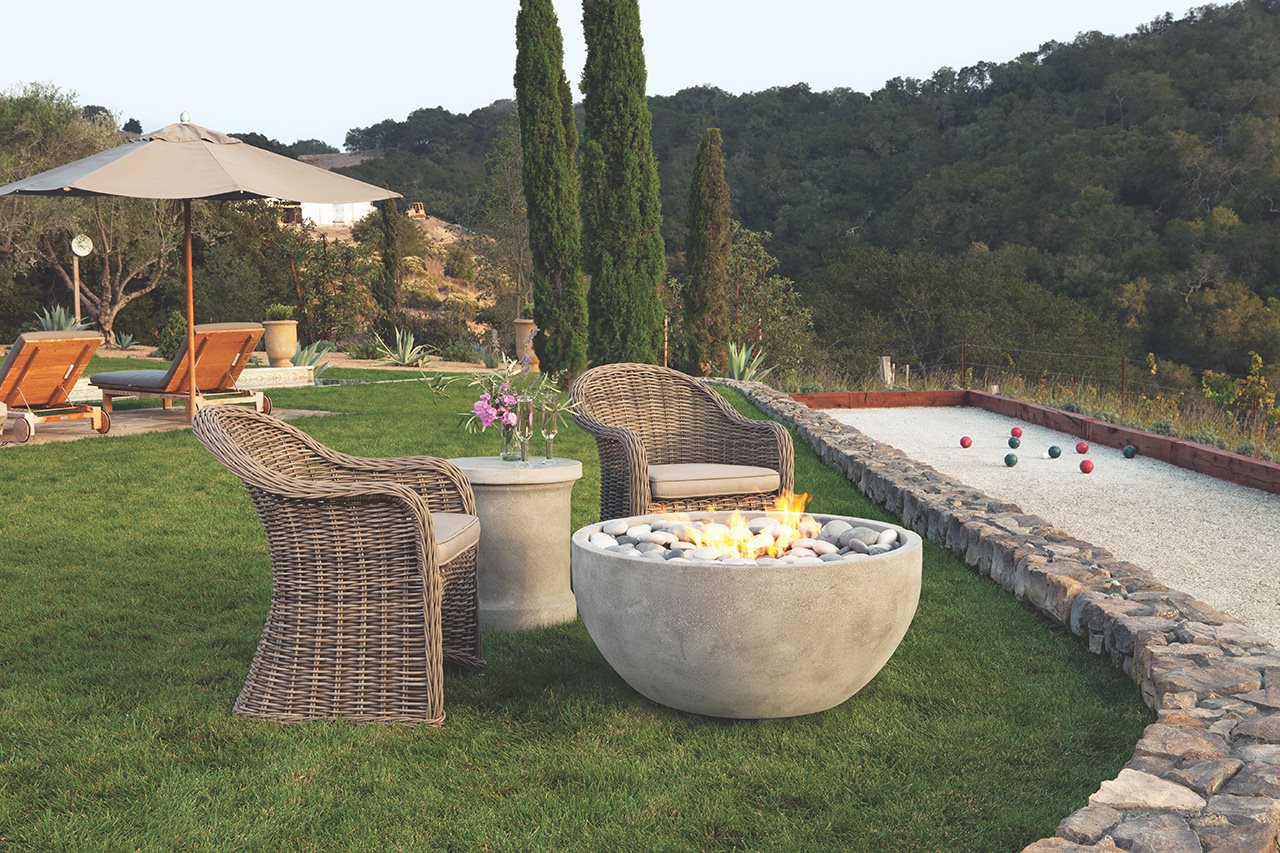2025-08-04T01:01:00
(BPT) – Summer is the perfect time to rethink your outdoor space. Create your very own luxury backyard for socializing or communing with nature. All you need is a plan and the materials to make it happen.
Belgard® can help fulfill your vision with pavers, retaining walls, fire features, outdoor accessories and more. We’ll help you create a beautiful, functional outdoor environment.
1. Transform underused areas
Don’t let side yards go to waste! These narrow zones are prime real estate for adding quiet seating nooks, vertical gardens or a streamlined outdoor kitchen. Even transitional spaces can become destinations with character and purpose.
Side yards hold the potential to become a cafe-style nook, container garden or stylish walkway connecting multiple outdoor spaces. Seating, lighting, planters or a vertical garden can make these areas feel cozy. Consider geometric-shaped pavers like Belgard’s Metropolitan collection to add flair, providing unique patterns on porches or patios. Extend the pavers down the connected walkway or driveway for a lengthening effect.
2. Embrace modularity
Modular design incorporates various shapes, sizes and textures that designers can group together to create intricate designs. This allows for innovative, fresh styles with less installation time.
Entertain, relax and work from the garden. Adaptable features like built-in benches with hidden storage and fire pits provide flexibility from dining to lounging. This “designing for life’s layers” style creates versatile solutions that adapt to everyday living.
Belgard’s modular paver lines use clean cuts and simple forms to create an uncluttered, on-trend aesthetic. Use pavers to create interesting designs. They can divide space into zones or blend with artificial turf for a sophisticated, natural look.
With modular design, you can customize spaces to fit your needs. Modular pavers give your outdoor project a holistic design. Elevate everything from seating areas or fire pit living rooms to complex pool projects. Elements Home enhances beauty and functionality for better outdoor living with outdoor essentials with a variety of Belgard products, including:
- Fridges, bars and sinks for an outdoor bar
- Fire pits
- Water features
- Lighting
- Structures
Want to see ultra-modern, clean lines in your outdoor design? Products like the revolutionary Artforms™, the industry’s first complete modular concrete panel system, showcase the benefits of this approach. To create a contemporary aesthetic, Artforms’ large-format concrete panels can be cut to any size you want. Get a new, modern look that’s efficient to install as well as being strong and durable. You can also easily add Artforms panels to any existing projects.
3. Use every inch wisely
With smaller lots and tighter footprints becoming more common, make the most of every square foot. Think vertical: Privacy walls, trellises and pergolas add height and structure while expanding usable space. Create height and add a lush atmosphere with a vertical garden or pergola. Starting with how you want to use your spaces encourages smart layering.
Called microspaces, smaller areas can even incorporate compact outdoor kitchens, cozy seating arrangements, plunge pools and more. You can use smaller spaces or front porches as dining areas, even adding cooking elements, with proper ventilation.
Work from home? Use a porch or patio as a workspace. Or add a small water feature or planters to create a moment of Zen. Imagine how you want to use the area, and make it happen.
Consider creating designated “rooms” in outdoor spaces through strategically installed hardscapes, planters or paver patterns. This makes your space feel larger and more intentional, whether you’re designing a peaceful reading corner or lively entertainment hub.
Create a cohesively designed space using Belgard Rooms. Augmented reality and 3D design helps you see exactly what spaces will look like. Templated designs offered through Belgard Rooms makes it easier to bring your perfect outdoor oasis to life.
4. Connect indoor and outdoor living
Blur the lines between indoors and out. Create seamless transitions using continuous flooring materials, large-format pavers and modular elements to mirror your interior design. Sliding doors, shade structures, heating elements and lighting extending beyond your back door also make it easier to enjoy your outdoor space all evening long. Style-forward hardscapes like Belgard’s Artforms™ or porcelain pavers provide a modern edge while maximizing comfort and usability.
This summer, rethink the limits of your outdoor layout. To recap, here’s what we recommend to create your dream backyard:
- Optimize every area including side yards or small nooks
- Use modular design for simple, adaptable solutions
- Elevate microspaces for working, entertaining and relaxing
- Make your space flow easily from indoor to out
Make every square foot work smarter while reflecting your aesthetic and lifestyle. Whether you’re working with a sprawling backyard or compact side yard, thoughtful design upgrades can completely transform outdoor areas.
Visit Belgard.com to start planning your ideal space.









































